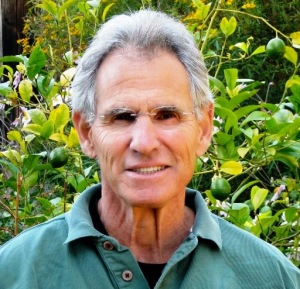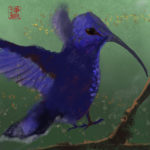
Intro to Interbeing
Guided Meditation on Interbeing
Video: Be Like Water, the film we watched in today’s Midweek Pause, featuring Cathy Winter, South African “Observational Experiential Dreamer.” Continue reading


Intro to Interbeing
Guided Meditation on Interbeing
Video: Be Like Water, the film we watched in today’s Midweek Pause, featuring Cathy Winter, South African “Observational Experiential Dreamer.” Continue reading
 Today’s mindful pause focused on nurturing the strength and support we already carry within us by “resourcing,” consciously drawing into our attention experiences of love, support, and wisdom. These resources can include, to name just a few, our breath and sense of grounding on the earth; people who love us, both living and dead; spiritual figures such as Jesus or Buddha or Ganesh; the support of the air and water, as well as other aspects of nature and the wild; and memories of balance and equilibrium.
Today’s mindful pause focused on nurturing the strength and support we already carry within us by “resourcing,” consciously drawing into our attention experiences of love, support, and wisdom. These resources can include, to name just a few, our breath and sense of grounding on the earth; people who love us, both living and dead; spiritual figures such as Jesus or Buddha or Ganesh; the support of the air and water, as well as other aspects of nature and the wild; and memories of balance and equilibrium.
Introductory Remarks: Resourcing
Guided Meditation: Resourcing
At the end of our meditation, I shared an excerpt from “Finding What life Is,” by Shodo Harada, published in Awake at the Bedside: Contemplative Teachings on Palliative and End of Life Care, edited by Koshin Paley Ellison and Matt Weinghast: Continue reading
The “Felt Sense” Prayer, as shared by Tara Brach
Intro to Bringing Mindfulness to Pain 15:06
Guided Meditation: Bringing Mindfulness to Pain 17:40
 Jon Kabat-Zinn has been a pioneer in bringing mindfulness techniques into the mainstream of medical practice to work with stress, pain and illness. You can read an overview of this work here. He is the author or editor of dozens of books; a good place to start is Full Catastrophe Living: Using the Wisdom of the Body and the Mind to Face Stress, Pain, and Illness.
Jon Kabat-Zinn has been a pioneer in bringing mindfulness techniques into the mainstream of medical practice to work with stress, pain and illness. You can read an overview of this work here. He is the author or editor of dozens of books; a good place to start is Full Catastrophe Living: Using the Wisdom of the Body and the Mind to Face Stress, Pain, and Illness.
Continue reading
 Guided meditation: Happiness and Loving This Life, led by Tara Brach
Guided meditation: Happiness and Loving This Life, led by Tara Brach
Today we drew on the work of beloved mindfulness teacher Tara Brach to explore how to find peace, even happiness, in the face of frustration or difficulty. In the prologue to her book True Refuge: Finding Peace and Freedom in Your Own Awakened Heart, Tara wrote about the adversity in her life that drove her own spiritual journey:
My earliest memories of being happy are of playing in the ocean. When our family began going to Cape Cod in the summer, the low piney woods, high dunes, and wide sweep of white sand felt like a true home. We spent hours at the beach, diving into the waves, bodysurfing, practicing somersaults underwater. Summer after summer, our house filled with friends and family—and later, with spouses and new children. It was a shared heaven. The smell of the air, the open sky, the ever-inviting sea made room for everything in my life—including whatever difficulties I was carrying in my heart.
Then came the morning not so long ago when two carloads of friends and family members took off for the beach without me. From the girl who had to be pulled from the water at suppertime, I’d become a woman who was no longer able to walk on sand or swim in the ocean. After two decades of mysteriously declining health, I’d finally gotten a diagnosis: I had a genetic disease with no cure, and the primary treatment was painkillers. As I sat on the deck of our summer house and watched the cars pull out of the driveway, I felt ripped apart by grief and loneliness. In the midst of my tears, I was aware of a single longing. “Please, please, may I find a way to peace, may I love life no matter what.”
True Refuge is a profound and life-changing book Another that you might consider in the same light is Full Catastrophe Living, by Jon Kabat-Zinn, a pioneer in integrating mindfulness practices in medicine, trauma, and pain control.
 Listen to Teresa’s guided meditation on delight.
Listen to Teresa’s guided meditation on delight.
In January, the podcast The American Life rebroadcast an episode titled A Show of Delights. When they first broadcast the episode a year earlier, during a time of wildfires, racial injustice, the beginning of the pandemic, and ever-increasing division, they called it revolutionary programming. To claim delight in a time of such disturbance, they admitted, can feel frivolous, even disloyal. But the ability to find joy and delight in the midst of darkness is what can give us the balance and strength to go on.
The first segment of the show interviewed bestselling poet Ross Gay, author of The Book of Delights. Every day for a year, he wrote an “essayette” on delight, cataloguing everything that had pleased him on that particular day.
He undertook, if you will, a practice of delight. And he found that he had to train himself to notice delight, to strengthen his muscle of delight. Delight doesn’t just arrive, he realized. You have to go looking for. The more he practiced, the more delight he found.
And Gay wasn’t just singing kumbaya. It’s striking how many losses are in the book: sickness, injury, the death of good friends. As Gay told the host of This American Life: “When I think of joy, grown up joy is made up of our sorrow, just like it’s made up of what is pleasing to us. Often, it felt like I wasn’t going to be able to talk about delight without talking about these other things. Delight often implies its absence.”
Artists know this is true. You need the darkness to see the light, the light to understand the darkness. And scientists recognize it, too: If you gaze at the sun, you will go blind. And if you never look away from the darkness? You will go blind.
Delight is a counter balance to difficulty: yin and yang, darkness and light. The Aztecs believed that the god Quetzalcoatl gave chocolate to humankind to make up for the pain of having to live on earth. The Buddha talked about the 10,000 joys and the 10,000 sorrows.
During the Vietnam War, Thich Nhat Hahn and other young monastics worked tirelessly to relieve suffering in the countryside, and to broker an end to the war. Anyone they found, they would try to help: soldier or civilian, South Vietnamese, North Vietnamese, or American. Because they wouldn’t take sides, they were shot at from all directions. Their work was tireless and often gruesome. But they went back, day after day after day. Thich Nhat Hahn spoke of what gave them the strength to continue in the introduction to Learning True Love: Practicing Buddhism in a Time of War, by Sister Chân Không:
“One day, Chân Không was preparing a basket of fresh, fragrant herbs to serve with rice noodles, and she asked me, ‘Thay, can you identify these herbs?’ Looking at her displaying the herbs with care and beauty on a large place, I became enlightened. She had the ability to keep her attention on the herbs, and I realized I had to stop dwelling on the war and learn to concentrate on the herbs also. We spent ten minutes discussing the herbs that could be found in the south of Vietnam and the ones in the central regions, and that encounter took my mind off the war, allowing me to recover the balance I needed so badly.”
Read “A Brief for the Defense,” a poem by Jack Gilbert
Listen to “The Show of Delights” on This American Life.
Listen to Teresa’s guided meditation on delight.
 An article in yesterday’s New York Times, “Rituals Keep These Athletes Grounded. They Can Help Parents, Too,” offers advice that is as relevant to meditators as it is to athletes and parents. (If you can’t access the article online, you can access a pdf here.)
An article in yesterday’s New York Times, “Rituals Keep These Athletes Grounded. They Can Help Parents, Too,” offers advice that is as relevant to meditators as it is to athletes and parents. (If you can’t access the article online, you can access a pdf here.)
“Rituals allow you to create a pathway to connect your mind and body and feel in control during a time where there are a lot of unknowns,” said Caroline Silby, Ph.D., a sports psychology expert for professional athletes, including the United States figure skating team. She said once that connection is made, we are “more empowered to respond and make effective choices.”
…. Before every free throw, [Kevin Love of the Cleveland Cavaliers] dribbles the ball three times and waits an extra beat before shooting — a ritual he finds to be “super grounding” and a way to find focus.
Few of us will find ourselves aiming a free throw in a championship game, but the ability to access calm and focus serves us whenever we are faced with stress or conflict – in a family spat, for instance, or cutoff by some jerk in traffic. In those cases, we can’t actually do the ritual, but if we have firmly established it, just calling it to mind will help bring calm and clarity to a moment of stress.
Here are some suggestions. Adapt these or invent others to make your ritual entirely your own. Continue reading
Today’s meditation in class was based on this lovely script by Jack Kornfield. You can access more guided meditations here, or simply click on the “Meditations” tab in the top menu.
I am larger than I thought! I did not know I held so much goodness!
—Walt Whitman
Begin the practice of lovingkindness simply. Sit so that you feel comfortable. Let your body rest and your heart be soft.
It is best to begin by directing lovingkindness to those you love, because often people can find it difficult to direct love to themselves. Picture, imagine, think of someone you love a lot, where love comes easily and is uncomplicated. Start where it’s easy to first open the heart. You can even begin with a child or a dog.
Breathe gently and recite inwardly the following traditional phrases directed toward their well-being. Continue reading
Class 4 Invitations: Awareness of Emotions and working with RAIN
3. Practice RAIN at least once during the week. Guidance with the process is helpful, and Tara Brach offers a number of guided meditations and other resources on her website:
RAIN can be particularly powerful when practiced with a partner. Tara explains the process, and offers a guided practice, here.